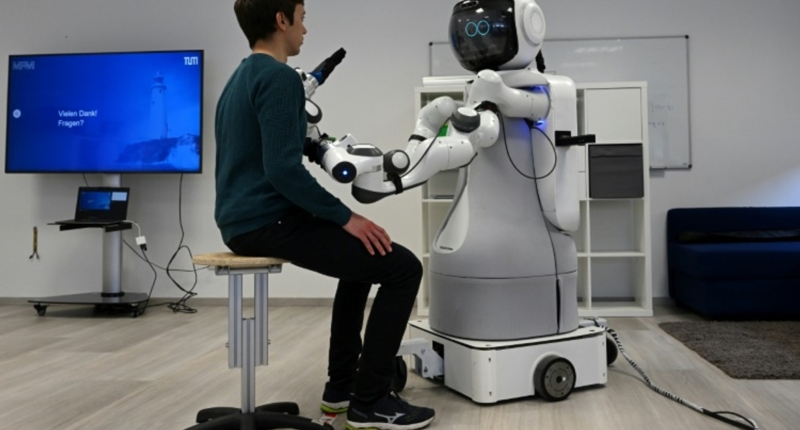Germany is developing a new sector called geriatronics that taps advanced technologies like robotics, IT, and 3D technology for geriatrics, gerontology, and nursing. Garmi, a white-colored humanoid robot, is one such creation that can perform diagnostics and provide care and treatment to patients. Researchers are developing robots that can take over some of the tasks performed today by nurses, carers, and doctors. Germany’s aging population is increasing rapidly, and an estimated 670,000 carer posts in the country will remain unfilled by 2050. However, one of the major challenges faced by researchers is whether most patients will accept the robot. The robot needs to gain patients’ trust for it to become widely accepted. Eva Pioskowik, the director of Sankt Vinzenz retirement home in Garmisch, said Garmi could help staff spend more time with residents, but she does not expect the robot to replace healthcare workers.
Germany Develops Robot Caregivers for Elderly Population
Germany is developing robots to provide care for the country’s rapidly aging population. Garmi, a white-colored humanoid robot, is part of a new sector called geriatronics, which employs advanced technologies like robotics, IT, and 3D technology for geriatrics, gerontology, and nursing. Garmi can perform diagnostics, provide care and treatment to patients. The robot is a creation of a team of scientists and medical practitioners at the Munich Institute of Robotics and Machine Intelligence.
With the country’s aging population, the demand for healthcare workers is increasing rapidly, and an estimated 670,000 carer posts in Germany will remain unfilled by 2050. The researchers are developing robots that can take over some of the tasks that are performed today by nurses, carers, and doctors. According to Abdeldjallil Naceri, the lead scientist of the lab, they can imagine that one day people can come to get their medical examination in a kind of technology hub, similar to ATMs where people can get cash.
Doctors could evaluate the robot’s diagnostics results from a distance, which is particularly valuable for people living in remote communities. Alternatively, the machine could offer a more personalized service at home or in a care home by serving meals, opening a bottle of water, calling for help in case of a fall, or organizing a video call with family and friends.
Retired German doctor Guenter Steinebach, 78, who tested the robot’s progress, said, “For me, this robot is a dream.” In the Garmisch laboratory, Steinebach sat down at a table equipped with three screens and a joystick, while a researcher designated as a test model took his spot in front of Garmi, who posed a stethoscope on his chest, an action directed by Steinebach from afar via the joystick. Medical data immediately appeared on the doctor’s screen.
The researchers are racing to develop robots that can take over some of the tasks carried out today by nurses, carers, and doctors as the country’s aging population increases rapidly. As a result, Garmi, the humanoid robot, is providing an innovative solution for elderly care.
Germany Develops Humanoid Robot to Aid Elderly Care
Garmi, a white-colored humanoid robot, is part of a new sector called geriatronics, which employs advanced technologies like robotics, IT, and 3D technology for geriatrics, gerontology, and nursing. Garmi can perform diagnostics, provide care and treatment to patients. Besides retired doctors, other medical practitioners regularly visit the lab to offer their ideas and feedback on the robot. Abdeldjallil Naceri, the lead scientist of the lab, said, “It’s like a three-year-old child. We have to teach it everything.”
Germany’s aging population is increasing rapidly, and an estimated 670,000 carer posts in the country will remain unfilled by 2050. Researchers are developing robots that can take over some of the tasks performed today by nurses, carers, and doctors. Naceri believes that “from 2030, we must be able to integrate this kind of technology into our society.”
However, one of the major challenges faced by Naceri’s team is not technological, medical, or financial. Rather, it remains to be seen whether most patients will accept the robot. Trust in the robot is necessary. “They need to trust the robot,” he said. “They need to be able to use it like we use a smartphone today.”
For Eva Pioskowik, the director of Sankt Vinzenz retirement home in Garmisch, a partner of the project, Garmi could allow staff to spend a bit more time with residents. While she does not expect the robot to replace healthcare workers, it could help serve drinks or bring meals.
Don’t miss interesting posts on Famousbio
